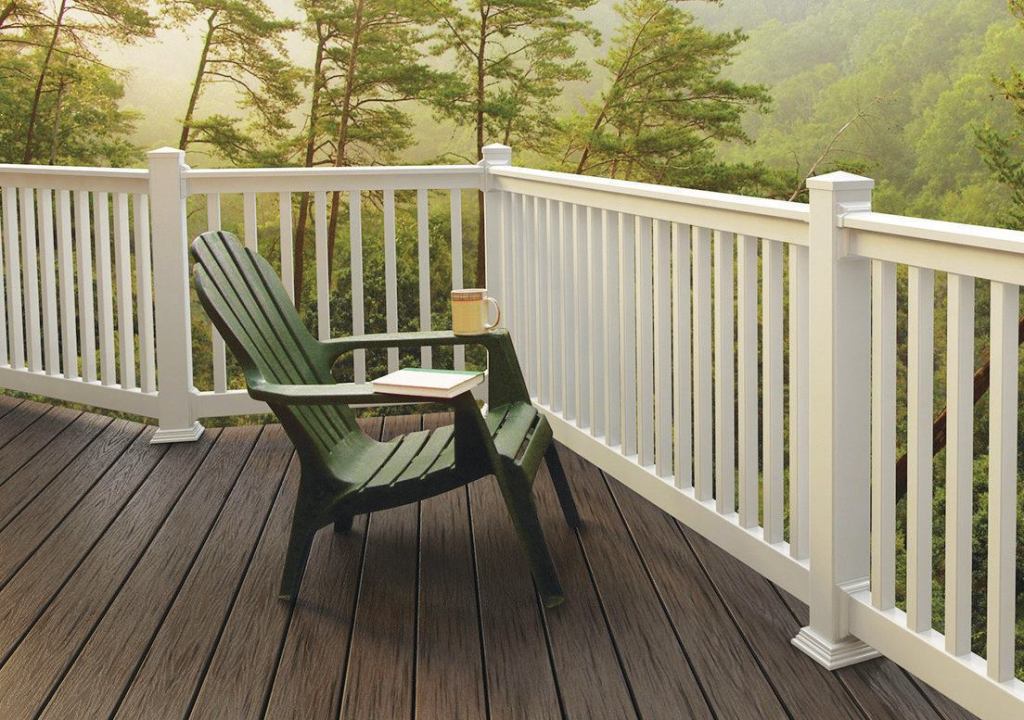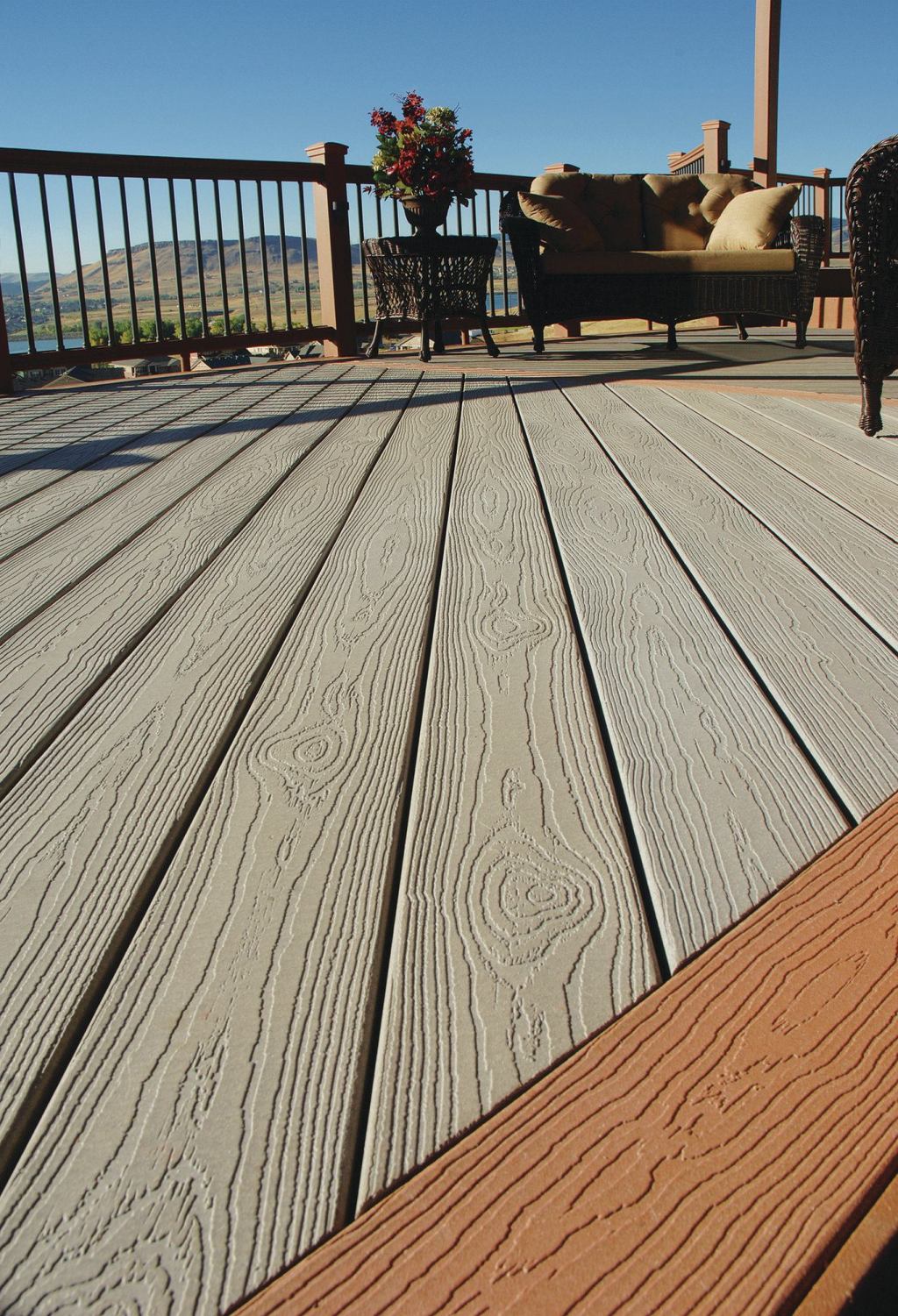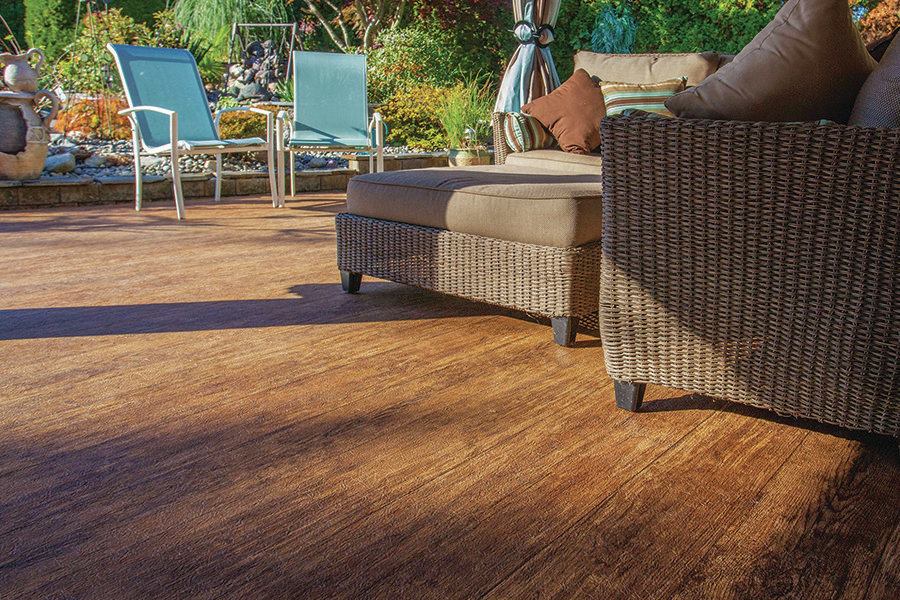A number of first-generation composite decking products had performance problems, particularly mold growth, because of their cellulose content. Decking made from cellular polyvinyl chloride addresses that problem by eliminating cellulose from the mix, but is more expensive to make. Manufacturers have found an attractive middle ground by wrapping conventional wood-plastic composites with another plastic, a protective cap, which improves scratch and stain resistance while protecting the composite boards from water. Capped composites can be manufactured less expensively than all-vinyl decking because the raw ingredients are less costly, and many in the industry predict that capped composites will continue to see double-digit growth, while the market share for basic uncapped composites will continue to decline. For now, though, wood decking still owns as much as 70% of the market (depending on who is keeping track). A key reason is cost: Standard pressure-treated wood has a huge price advantage over other types of decking. Plus, it’s familiar to both homeowners and builders, and it’s available just about anywhere.
-
Enduris Endeck Decking
An outer, embossed shell surrounds cellular PVC

-
Tamko Building Products EverGrain Composite Decking
Compression molding creates a deep grain pattern

-
Tiger Deck Tigerwood
This South American hardwood should last two to three times longer than U.S. softwoods

-
Tufdek Outdoor Flooring
The waterproof membrane is designed to be used as a walking surface on decks and patios, including rooftop decks
